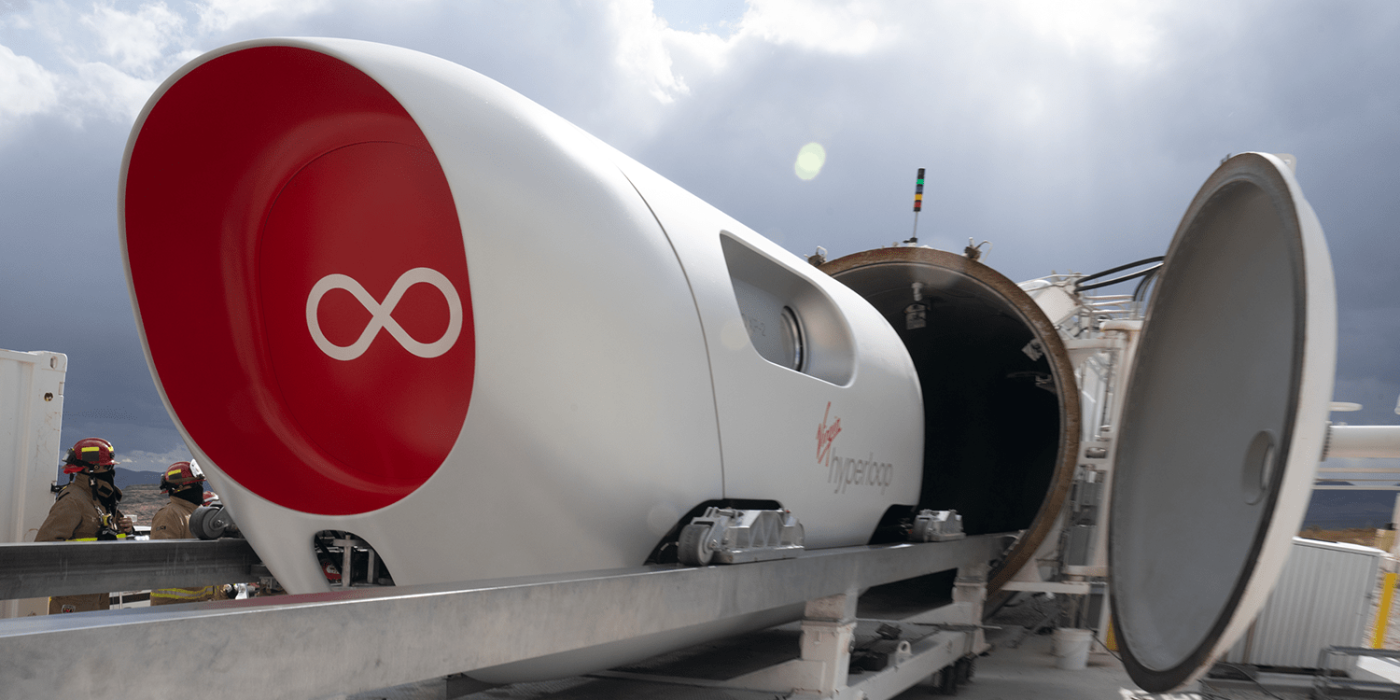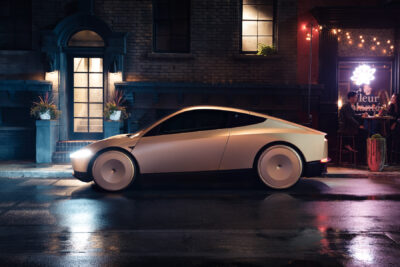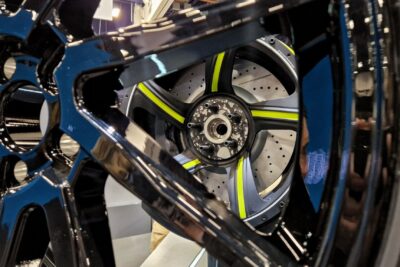Virgin Hyperloop transports first passengers
Virgin Hyperloop has completed its first crewed test drive. A Hyperloop capsule with two of the company’s managers on board was transported at over 170 kph through a test tube near Las Vegas. Virgin Hyperloop is aiming for commercial operation of the transport system by 2030.
The Hyperloop transport system is based on an idea by Tesla founder Elon Musk and was subsequently taken up by several companies. Virgin Hyperloop, a company owned by US billionaire Richard Branson, is one of the most ambitious developers of the system, which is intended to enable exceptionally fast travel in magnetically driven capsules using a vacuum in the transport tube.
The company managers braved the maiden voyage on the XP-2 vehicle, which is designed by BIG – Bjarke Ingels Group and Kilo Design, who said that the vacuum propelled train is custom-built with occupant safety and comfort in mind. The production vehicle will end up being more extensive than the 2-seater XP-2 test vehicle built to demonstrate that passengers can, in fact, safely travel in a hyperloop vehicle. The following production vehicle should seat up to 28 passengers.
“I can’t tell you how often I get asked ‘is hyperloop safe?'” said Jay Walder, CEO of Virgin Hyperloop. “With today’s passenger testing, we have successfully answered this question, demonstrating that not only can Virgin Hyperloop safely put a person in a pod in a vacuum environment but that the company has a thoughtful approach to safety which has been validated by an independent third party.”
According to Virgin Hyperloop, it had already completed 400 uncrewed trips in a test tube in Las Vegas before they carried out the first test trip with two passengers on board. The top speed was 172 km/h. The company aims to have the transport system certified by 2025, with the commercial operation to follow in 2030.
Josh Giegel, Virgin Hyperloop’s Chief Technology told CNN Business that hyperloop pods would eventually travel at the speed of aircraft but with a fraction of the energy consumption. What also comes with this technology is a complete absence of CO2 or other polluting emissions.





0 Comments